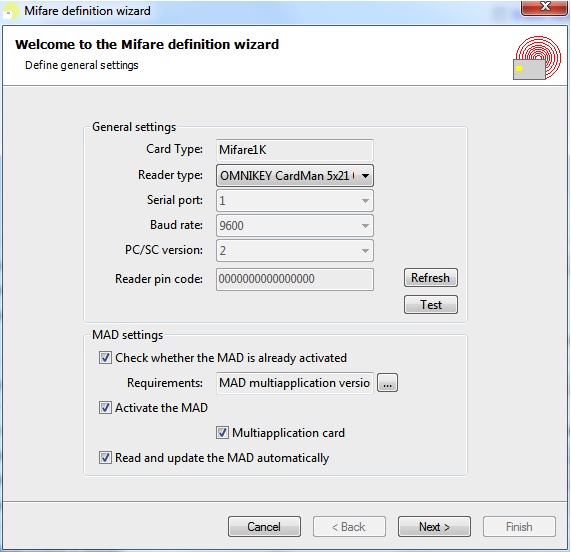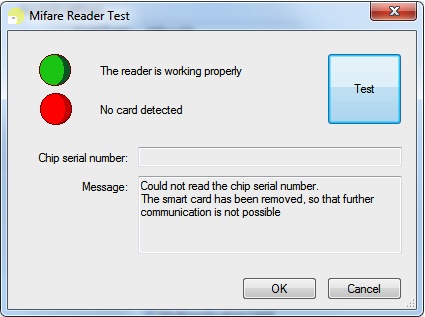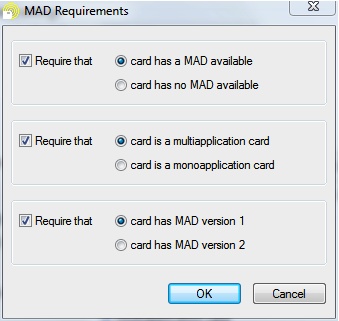

The General settings group box allows choosing the reader type, the serial port to which the reader is connected and the baud rate to be used. CardExchange® Producer supports a lot of readers for encoding MIFARE® Classic. For a current list of supported encoders please visit our website https://cardexchangesolutions.com/producer-encoders.
PC/SC readers are only available when installed on your system. If the reader is not available, please make sure it is installed properly. You can click on the Refresh button to reload the list with available readers. You are able to test if the connected reader is working and responding correctly. Click on the Test button to open the MIFARE® Reader Test window.

When pressing the Test button, CardExchange® Producer will try to connect with the reader and, if a card is present, it will try to read the UID. If the test succeed and the reader is working and a card is present on the reader, you will have two green lights.
The card type cannot be changed after the definition has been created, as the definition includes all information about the structure of the card memory. When reading the UID from the first four bytes of block 0 of sector 0, the first byte is treated by default as the least significant byte. For example, the byte series 161 198 51 70 is interpreted as 1,177,798,305. This behavior can be changed by checking the option Invert chip serial number in the Advanced Mappings, as explained in Step 5. If checked, the first byte will be treated as the most significant byte and the same byte series will interpreted as 2,714,121,030.
The MAD settings group box makes it possible to activate the MAD-related functionality. Checking the first check box causes the general-purpose byte of the sector trailer of sector 0 to be read and interpreted. This byte contains information about the MIFARE® Application Directory.

Three types of requirements can be defined by clicking on the  button right from the Requirements text box:
button right from the Requirements text box:
•whether the card has a MAD or not,
•whether the card is a multi- or a monoapplication card,
•and whether the MAD is version 1 (Mifare 1K) or version 2 (Mifare 4K).
The second check box makes it possible to Activate or change these MAD properties. If it is checked, the MAD will be Activated. The user can choose whether it should be a multi-application card or not. The MAD version written depends on the card type specified for this definition.
The last check box allows specifying whether the MAD should be read and updated automatically. If the card has a MAD or if the MAD is activated in the definition and the user does not check this option, he cannot use any MAD-related functionality other than setting the general purpose byte of sector 0 and he will have to define a data item to write the correct entries into the MAD.
Click Next to proceed with the creation of the Classic Definition and go to Step 3.
